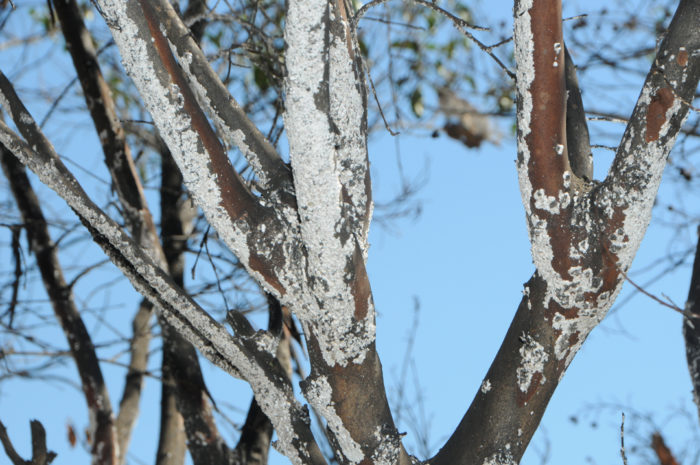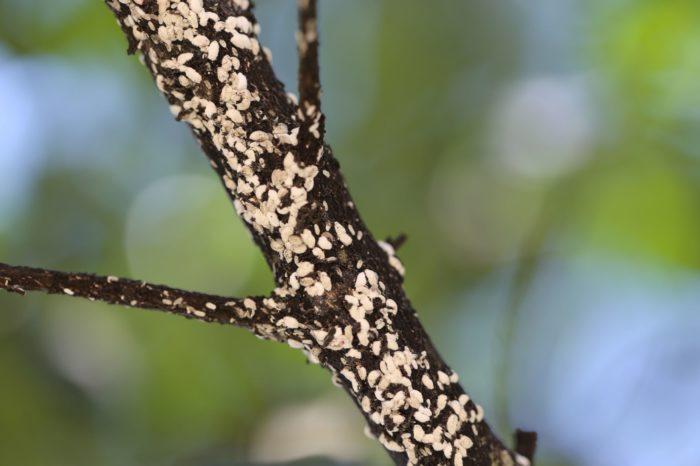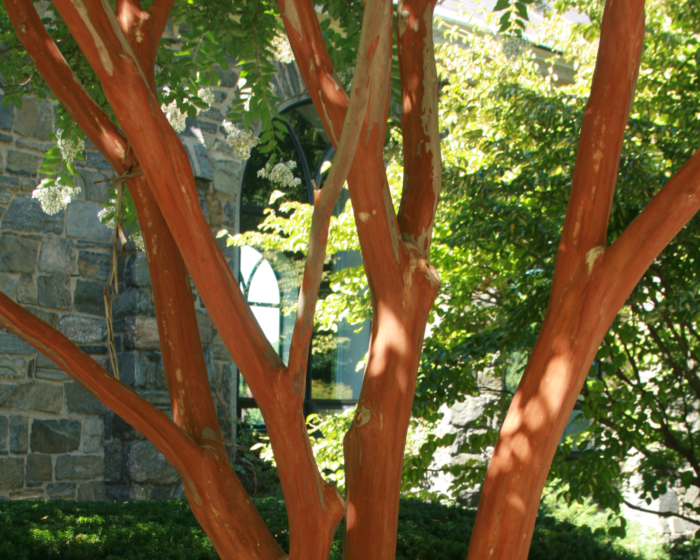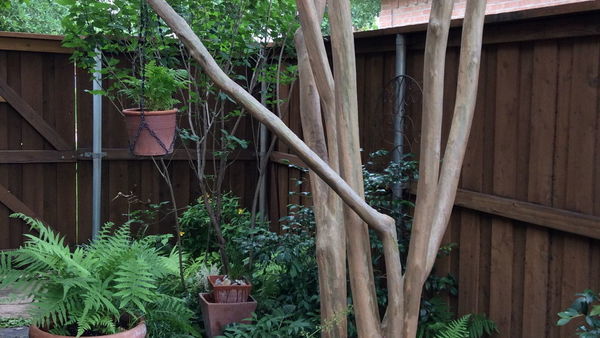
Crape myrtles (Lagerstroemia spp. and cvs., Zones 7-9) are truly one of the trees Southerners have come to rely on in the landscape. Plant breeding innovations over the last 30 or so years have led to wonderful new selections. These new selections have made crape myrtles even more valuable in the landscape. You can now purchase crape myrtles that are essentially ground covers, several compact selections perfect for a smaller landscape, as well as new variations of the larger trees we know and love.
A new pest of crape myrtle has found its way into the South. Commonly known as crape myrtle bark scale (CMBS), this pest was first observed in Texas and has migrated through several parts of the South. Dr. Blake Layton from Mississippi State who has worked with this pest says, “crape myrtle bark scale is a serious new insect pest of one of the South’s favorite landscape plants. Heavy infestations result in unsightly accumulations of sooty mold and cause trees to grow and bloom poorly. Sooty mold will also accumulate on other plants, mulch and lawn furniture located under or near infested trees. Effective treatments are available, but the best way to manage this pest is to avoid introducing it into the area and landscape in the first place. The only way to do this is to make sure any new crape myrtles brought into the area are not infested.”
 |
 |
So how do we accomplish not bringing this pest into our city or county if it’s not already present? One of the first steps is knowing how to identify CMBS and how to deal with the pest if you find it. If you see tiny white or gray felt-like ovals on your crape myrtle, you might have CMBS. Look near pruning cuts and in branch crotches to catch this pest in the early stages of infestation. We are still learning how to control CMBS, but we know lady beetles (including the Asian species) do feed on CMBS. On smaller plants, it is possible to use horticultural oils or soapy water and a scrub brush to remove the scale and hold it somewhat at bay.
The best source for information, including treatment options, on this pest is stopcmbs.com, a website put together by several university professionals in the Southern region. You can use this resource to help learn how to identify and treat CMBS. Additionally, several universities throughout the South have been very aggressive in publishing information for homeowners and industry professionals on CMBS. I recommend searching out information and resources from your individual state or county extension service to make sure you are getting top-notch information that is specific to your location.
There have been some early reports that American beautyberry (Callicarpa americana, Zones 6-10) may also be susceptible to CMBS infestations, so home gardeners should also be monitoring this plant.
Andy Pulte is a faculty member in the Plant Sciences department at the University of Tennessee.
Fine Gardening Recommended Products

A.M. Leonard Deluxe Soil Knife & Leather Sheath Combo
Fine Gardening receives a commission for items purchased through links on this site, including Amazon Associates and other affiliate advertising programs.



















Comments
Log in or create an account to post a comment.
Sign up Log in